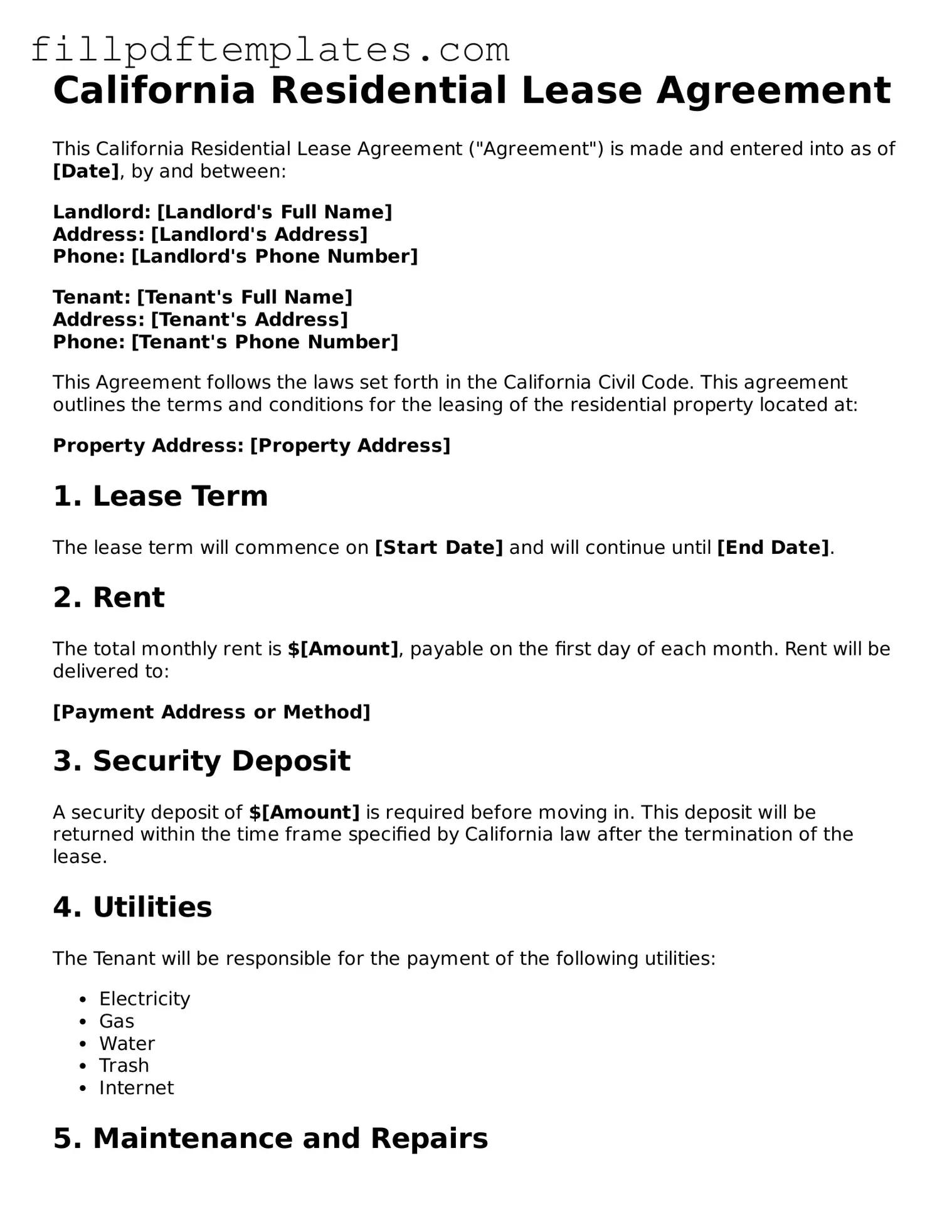California Residential Lease Agreement
This California Residential Lease Agreement ("Agreement") is made and entered into as of [Date], by and between:
Landlord: [Landlord's Full Name]
Address: [Landlord's Address]
Phone: [Landlord's Phone Number]
Tenant: [Tenant's Full Name]
Address: [Tenant's Address]
Phone: [Tenant's Phone Number]
This Agreement follows the laws set forth in the California Civil Code. This agreement outlines the terms and conditions for the leasing of the residential property located at:
Property Address: [Property Address]
1. Lease Term
The lease term will commence on [Start Date] and will continue until [End Date].
2. Rent
The total monthly rent is $[Amount], payable on the first day of each month. Rent will be delivered to:
[Payment Address or Method]
3. Security Deposit
A security deposit of $[Amount] is required before moving in. This deposit will be returned within the time frame specified by California law after the termination of the lease.
4. Utilities
The Tenant will be responsible for the payment of the following utilities:
- Electricity
- Gas
- Water
- Trash
- Internet
5. Maintenance and Repairs
The Landlord is responsible for maintaining the premises in a habitable condition. The Tenant agrees to report any issues promptly.
6. Termination
Either party may terminate this Agreement by providing written notice at least [Number of Days] days before the intended move-out date.
7. Governing Law
This Agreement shall be governed by the laws of the State of California.
8. Additional Terms
Additional terms and conditions may be included here: [List any additional terms].
9. Signatures
By signing below, both parties acknowledge and accept all terms outlined in this Agreement:
Landlord's Signature: _______________________ Date: ________________
Tenant's Signature: _______________________ Date: ________________
This Agreement is binding and enforceable in accordance with its terms.
